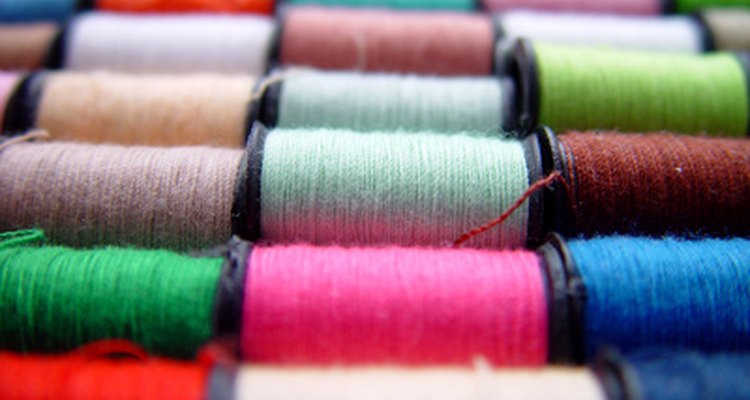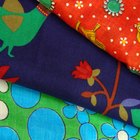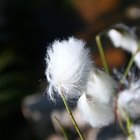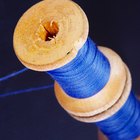
Polyester cotton is made by combining stands of synthetic polyester and natural cotton, with dominant fiber in the finished fabric being polyester. The typical polyester cotton mix is 65% polyester and 35% cotton. Polyester cotton is usually made to construct uniforms, bed sheets, and home furnishings because it is easy to care for, does not shrink, and is virtually wrinkle-free.
While the addition of natural cotton fibers does help to make the finished fabric softer and more comfortable than 100% polyester, there are some disadvantages to polyester cotton.
Synthetic Fiber
Polyester is a man-made fiber made of coal, air, water and petroleum products. There are several different types of polyester; through the term “polyester” typically refers to polyethylene terephthalate (PET). Polyester fibers for the production of fabrics are formed by forcing fiber forming materials through tiny holes, forming a thread. Other forms of polyester are also used to make plastic bottles, insulation, and the glossy finish on instruments.
Pollutants
Since polyester is the main component in polyester cotton and polyester is a synthetic, man-made, material, chemicals are used and created as the result of production. De-sizing and bleaching agents are used to pre-treat the fabric as well as dyes and other chemicals used in printing techniques to create the final colors and patterns. Water and energy consumption are also a factor in the processing technique used to create the fabric.
Flammable
Polyester is a polymer, meaning that it has many of the same characteristics as plastic. It melts and burns at the same time and quickly sticks to any surface it drips on, including skin. Since the primary fiber in polyester cotton is polyester, this means that the fabric is flammable and that polyester cottons must be ironed at a very low temperate, if at all, to prevent melting.
Comfort
The blend of polyester and cotton does not breathe or stay cool as well as pure cotton, making it uncomfortable for some. Since polyester is a synthetic fiber and less absorbent than natural fibers, the higher the percentage of polyester in the finished fabric, the less breathable and rougher the texture.
Staining
Polyester fibers hold non water-soluble dye extremely well, which is great for creating vibrant colors and patterns for clothing and upholstery and makes water-soluble stains easy to clean. However, it also means that oil stains, which are non water-soluble, are quick to set and difficult to remove.
Related Articles

What Is Arnel Vintage Material Fabric?

What Types of Fabrics Absorb Dye Best?

Characteristics of Polyester & Cotton

Properties of Bentonite Magmas

Which Fabrics Are Most Fire Resistant?

Types of Polyester Fabric

What Are Fire Resistant Clothes Made Of?

Characteristics of Rayon Fabric

How Much of the World's Clothing Is ...

What Is Dye Made From?

What Is Silk Chiffon?

What Is Cotton Plisse?

How Is Wool Turned Into Fabric?

Definition of Polyester Staple Fiber

The Flammability of Fabric Softeners

Microfiber vs. Cotton Clothes

Can Modal Be Dyed?

What Is the Difference Between Acrylic ...

How to Make Grapefruit Seed Extract

What Is a Synthetic Polyester Fabric?
References
Writer Bio
Corrin Foster earned her M.B.A. from Indiana University and bachelor's degree from Ball State University, specializing in marketing and professional English composition. She has more than seven years experience in writing and distributing press releases, brochures and newsletters, copyediting, and project coordination.
Photo Credits
colour thread image by Stasys Eidiejus from Fotolia.com